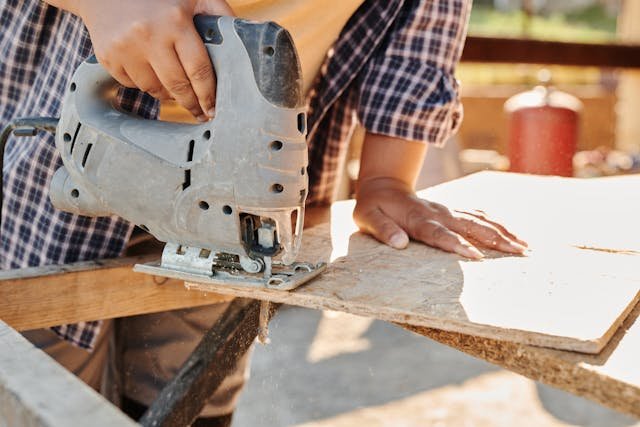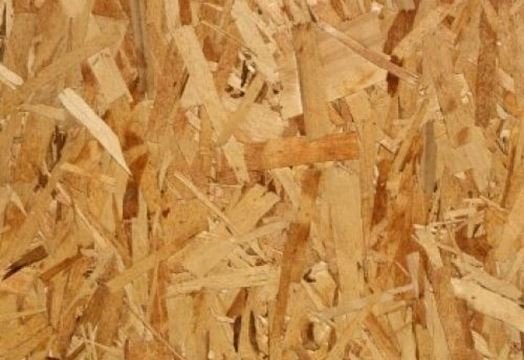Physical Address
304 North Cardinal St.
Dorchester Center, MA 02124
Physical Address
304 North Cardinal St.
Dorchester Center, MA 02124

What is the difference between oriented strand board (OSB) vs plywood and which of these materials is a better choice?
Oriented strand board (OSB) and plywood are similar materials that can used interchangeably. These materials are panel products that are made similarly- OSB and plywood are made by compressing and glueing pieces of wood.
OSB and plywood are suitable materials to use for packaging and in construction. However, how these materials are manufactured contributes to their unique strengths and weaknesses.
So it’s important to understand the difference between OSB and plywood as it helps in making the right decision on which material to use.

OSB is a reliable engineered wood material manufactured by adding adhesive and compressing several layers of wood strands in different orientations.
Oriented strand board (OSB) was invented in 1963 by Armin Elmendorf. OSB is a similar engineered wood material to plywood but there is a difference. The material is made of wood shavings tightly compressed with glue or resin under high heat and pressure.
Oriented strand board is a material with a rough and variegated surface. The material is produced in different types and thicknesses.
OSB is often confused with chipboard. But it’s a material that can be made from small trees grown specifically to make this type of engineered wood material.
OSB is a suitable engineered wood with mechanical properties and this makes it the perfect construction material. Oriented strand board has become the preferred material- it has become more popular than plywood, and it currently commands 66% of the North American structural panel market.
OSB is a reliable material mostly used in flooring, sheathing in walls, and roof decking. A quantity of OSB is also used to make furniture.
Also Read: Stain vs Varnish: Difference and Comparison

Plywood is an engineered wood made by cross-laminating layers of wood veneer glued together with adjacent layers. Plywood is an engineered wood that originated from the family of manufactured boards, which also include oriented strand board (OSB), and other materials such as particle board and medium-density fireboard (MDF).
To manufacture plywood, a process called cross-graining is used to increase the material’s strength. Piles of wood veneer are glued together with adjacent layers, with their wood grain rotated about 90 degrees to one another.
Plywood usually comes in a variety of types and grades. There is a grade A, B, C, D, and even BC or CD.
Other grades also available are BC or CD. The “BC” and “CD” classifications indicate that one side has a higher grade compared to the other.
Oriented strand board (OSB) and plywood may be engineered woods from the family of manufactured boards, but their manufacturing process is quite different.
Let’s look at what differentiates these engineered materials.
Oriented strand boards and plywood share a similar quality in terms of their strength. However, plywood is stiffer than OSB by approximately 10%.
Despite this little difference, both materials are reliable to use in packaging and construction. But if you are looking for a material capable of holding nails and screws for a longer period, then plywood is your best option.
Also Read: Stain vs Paint: Difference and Comparison
Plywood is also the better option and resists moisture.
Oriented strand board (OSB) is an engineered wood that usually takes a longer period to become saturated when wet. It also takes a longer period to dry.
OSB becomes swollen when it comes in contact with water. The material gets swollen when it absorbs water because the compaction stress is released as a result of the wood chips being pressed into panels.
Another factor to consider between these two engineered woods is how much the finished products weigh.
Oriented strand board weighs more than plywood due to their manufacturing process.
On average, a 23/32-inch 4×8 foot plywood piece weighs approximately 67 pounds (30.3 kilograms), whereas a piece of oriented strand board of the same size weighs about 78 pounds (35.3 kilograms).
This is a major difference to consider, especially if one of these materials is to be used for a roofing project.
Oriented strand board (OSB) is a building material considered to be less harmful to the environment. It’s a “green” building material as it’s made of wood chips from an entire tree.
While plywood requires larger-diameter trees usually harvested from old-growth forests, OSB is made from smaller-diameter trees.
Also Read: Stain vs Paint Deck: Difference and Comparison
Which of these engineered woods is more expensive to purchase for a project?
Well, if you are on a budget, then OSB is the material for you. OSB is more affordable than plywood. A 4×8 sheet of OSB will cost about $6, while the same size of plywood will cost about $10.
| Oriented strand board (OSB) | Plywood | |
| Material composition | Wood strands and adhesives | Thin wood veneers glued together |
| Moisture resistance | Less resistance and can swell | Has a better resistance and dries faster |
| Strength | Uniform strength across the board | High strength, especially along the edges |
| Application | Sheathing, subflooring, and roofing | Furniture, construction, and subflooring |
| Cost | Less expensive | More expensive |
Also Read: Blueprint vs Schematic: Difference and Comparison
| Pros | Cons |
| Can be used to manufacture larger panels than plywood | Oriented strand board (OSB) is not water resistant and cannot be used for exterior projects |
| Less expensive material compared to plywood | Weighs more than plywood |
| Considered a more environmentally friendly product as it can be made from scraps of smaller trees | Doesn’t hold screws, nails, and fasteners as firmly as plywood |
| Does not delaminate as plywood | Swells more than plywood when they come in contact with moisture |
| Pros | Cons |
| Nails, screws and fasteners are likely to remain in place for a longer period | Cost more than OSB |
| Weigh less than OSB | Can delaminate or separate with humidity or extreme heat. |
| Plywood panels swell less than OSB when they come in contact with moisture | Used wood veneer sheets that make it less environmentally friendly |
| Plywood off-gasses are less harmful gases than OSB | Can sometimes have gaps or voids between the plys |
From what we have discussed so far in this guide, choosing one material over the other depends on a few factors.
Plywood would be a better option for an exterior project and it weighs less than an OSB.
However, if you are more concerned about using a material that is environmentally friendly and less expensive, OSB is the best choice for your project. OSB and plywood are similar in terms of strength and they are also reliable to use for roof decking.
OSB and plywood are engineered wood from the family of manufactured boards. Their manufacturing processes are different but they serve unique purposes in packaging and construction.